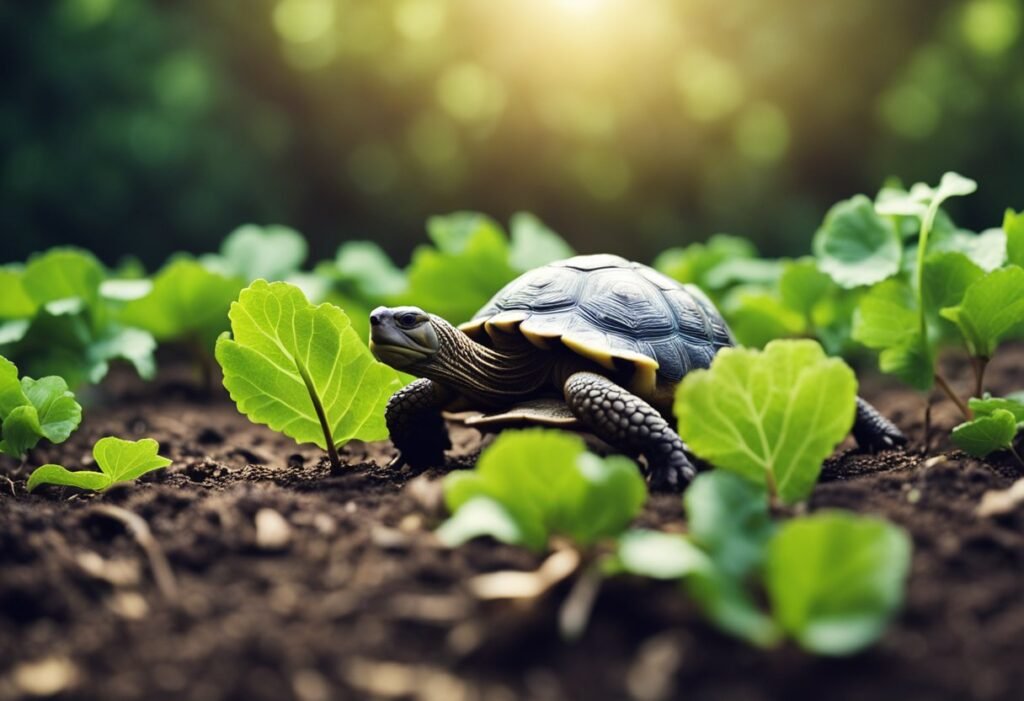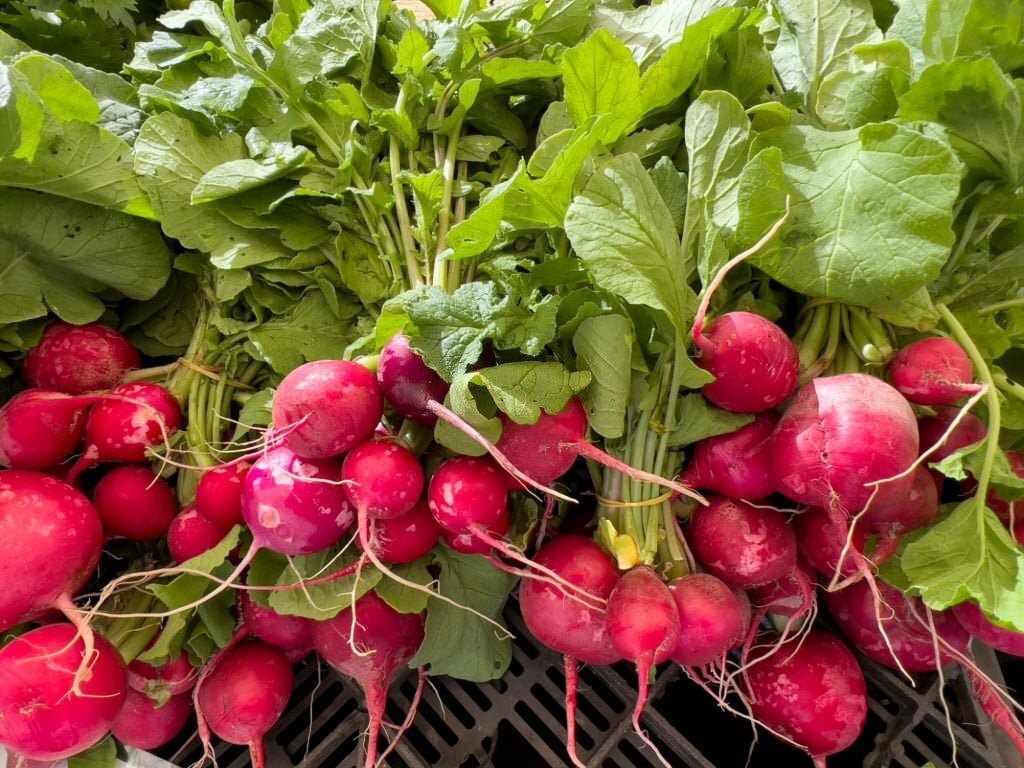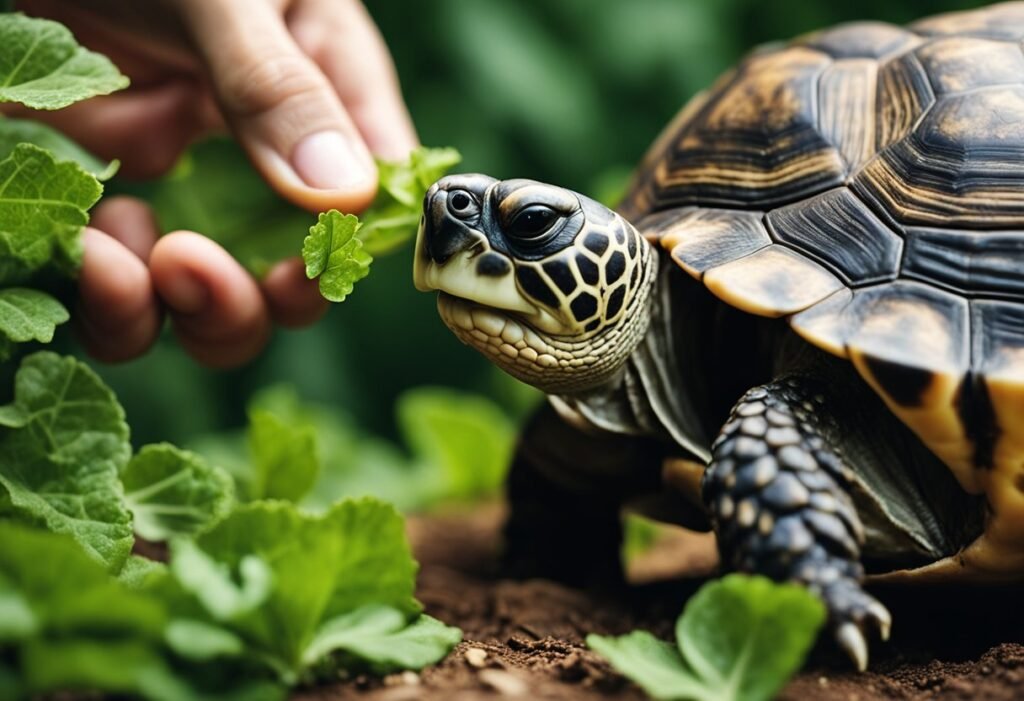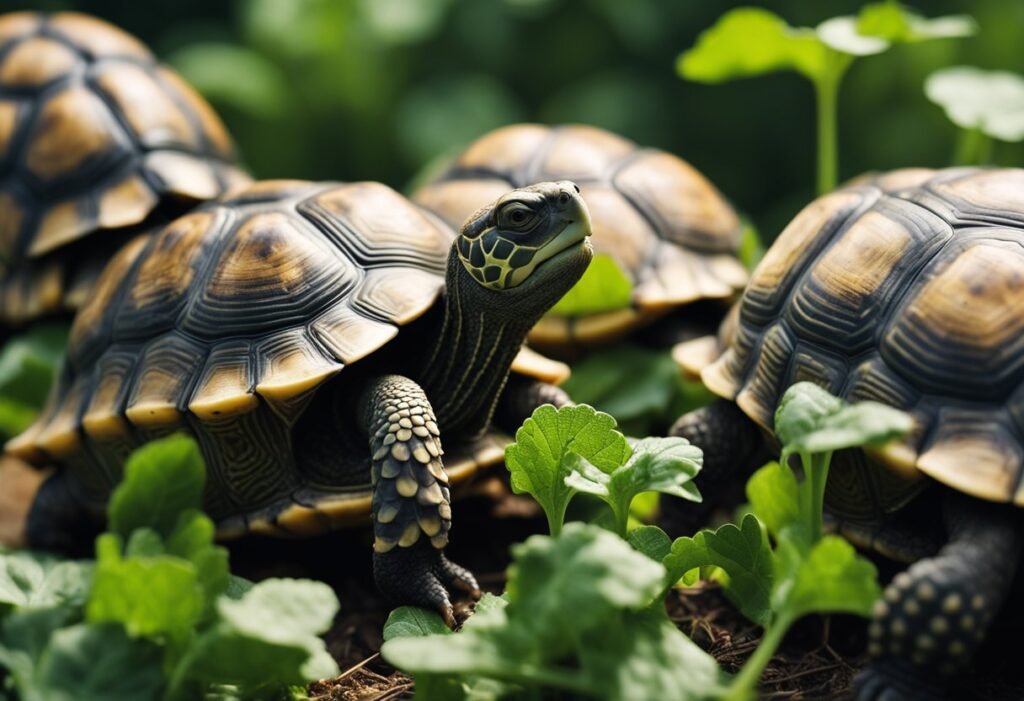Tortoises are known to be herbivores, and their diet consists of various greens and vegetables. However, when it comes to feeding them radish leaves, there seems to be some confusion among pet owners. The question arises, can tortoises eat radish leaves?
The answer is yes, tortoises can eat radish leaves, but only in moderation. Radish leaves are high in oxalic acid, which can cause health problems if consumed in large quantities. Therefore, it is important to feed radish leaves to your tortoise in small amounts and occasionally. It is also recommended to feed them a variety of other greens and vegetables to ensure a balanced diet.
In this article, we will explore the benefits and risks of feeding radish leaves to tortoises. We will also discuss the proper way to prepare and serve radish leaves to your pet. By the end of this article, you will have a better understanding of whether or not radish leaves should be a part of your tortoise’s diet.
Tortoise Diet Basics

Tortoises are herbivorous animals that require a diet rich in fiber and low in fat. A balanced diet is essential for their overall health and well-being. In the wild, tortoises consume a variety of plants, including grasses, weeds, and flowers.
When it comes to feeding your tortoise, it is important to provide a variety of fresh vegetables and fruits. The diet should include leafy greens such as kale, collard greens, and dandelion greens. Vegetables such as carrots, squash, and sweet potatoes can also be included in their diet.
It is important to note that not all plants are safe for tortoises to eat. Some plants, such as rhubarb and avocado, are toxic to tortoises and should be avoided. Additionally, certain fruits such as grapes and cherries should only be given in moderation due to their high sugar content.
In addition to fresh vegetables and fruits, tortoises also require a source of calcium. This can be provided through supplements or by offering calcium-rich foods such as kale, collard greens, and calcium-fortified pellets.
When feeding your tortoise, it is important to avoid overfeeding and to provide a balanced diet. A healthy diet will help prevent obesity and other health issues that can arise from a poor diet.
Understanding Radish Leaves
Radish leaves are the green leafy tops of the radish plant that are often discarded. However, they can be a nutritious addition to your pet tortoise’s diet.
Radish leaves are rich in vitamins and minerals, including vitamin C, vitamin K, calcium, and iron. They are also high in fiber, which can help regulate your tortoise’s digestive system.
It is important to note that radish leaves contain goitrogens, which can interfere with thyroid function in large amounts. However, this is only a concern if your tortoise consumes large quantities of radish leaves on a regular basis.
When feeding radish leaves to your tortoise, it is best to offer them in moderation as part of a varied diet. You can chop them up and mix them in with other leafy greens, or offer them as a standalone treat.
Overall, radish leaves can be a healthy addition to your tortoise’s diet, but should be fed in moderation and as part of a balanced diet.
Health Benefits of Radish Leaves for Tortoises

Radish leaves are not only safe for tortoises to eat but also have several health benefits. Here are some of the benefits of feeding radish leaves to your tortoise:
- High in Fiber: Radish leaves are a good source of dietary fiber, which can help regulate the digestive system of tortoises.
- Rich in Vitamins and Minerals: Radish leaves are packed with vitamins and minerals such as vitamin C, vitamin K, calcium, and iron. These nutrients can help boost the immune system and promote healthy bone growth.
- Low in Oxalates: Radish leaves are low in oxalates, which can be harmful to tortoises if consumed in high amounts. This makes radish leaves a safe and healthy option for your pet.
- Anti-Inflammatory Properties: Radish leaves contain compounds that have anti-inflammatory properties. This can help reduce inflammation and swelling in tortoises with arthritis or other inflammatory conditions.
- Hydrating: Radish leaves have a high water content, which can help keep your tortoise hydrated and prevent dehydration.
Overall, feeding radish leaves to your tortoise can provide several health benefits and is a safe addition to their diet. However, as with any new food, it’s important to introduce radish leaves gradually and monitor your tortoise for any adverse reactions.
Potential Risks of Feeding Radish Leaves to Tortoises
While radish leaves can be a nutritious addition to a tortoise’s diet, there are also potential risks to consider. In this section, we will discuss the two main risks associated with feeding radish leaves to tortoises.
Oxalic Acid Content
One of the main concerns with feeding radish leaves to tortoises is their high oxalic acid content. Oxalic acid is a compound that can bind to calcium in the body, preventing it from being absorbed. This can lead to calcium deficiency and metabolic bone disease in tortoises.
To minimize the risk of calcium deficiency, it is important to balance the oxalic acid content of radish leaves with other calcium-rich foods. Some examples of calcium-rich foods that can be fed to tortoises include kale, collard greens, and dandelion greens.
Digestive Issues
Another potential risk of feeding radish leaves to tortoises is digestive issues. Radish leaves contain high levels of fiber, which can be difficult for tortoises to digest. This can lead to bloating, constipation, and other digestive problems.
To prevent digestive issues, it is important to introduce radish leaves slowly and in small amounts. It is also important to ensure that tortoises have access to fresh water at all times, as this can help with digestion.
In summary, while radish leaves can be a nutritious addition to a tortoise’s diet, it is important to be aware of the potential risks. By balancing the oxalic acid content and introducing radish leaves slowly, you can help ensure that your tortoise stays healthy and happy.
How to Safely Introduce Radish Leaves into Tortoise Diet

Radish leaves can be a great addition to your tortoise’s diet, but it is important to introduce them safely. Here are some tips on how to do it properly.
Proper Washing
Before feeding radish leaves to your tortoise, make sure to wash them thoroughly. Radishes are often grown in soil, which means that the leaves can contain dirt, debris, and potentially harmful bacteria. To wash the leaves, first remove any large stems or damaged leaves. Then, rinse the leaves under running water, making sure to remove any dirt or debris. You can also soak the leaves in a bowl of water for a few minutes to help remove any remaining dirt.
Portion Control
When introducing radish leaves to your tortoise’s diet, it is important to start with small portions. Too much of a new food can upset your tortoise’s digestive system. Start by offering a small amount of radish leaves, and gradually increase the amount over time. You can also mix the radish leaves with other greens to make them more appealing to your tortoise.
Overall, radish leaves can be a healthy addition to your tortoise’s diet, but it is important to introduce them safely. By washing the leaves properly and practicing portion control, you can help ensure that your tortoise stays healthy and happy.
Alternatives to Radish Leaves for Tortoises
While radish leaves can be a great addition to a tortoise’s diet, there are other options available if you cannot find them or your tortoise does not like them. Here are some alternatives to consider:
Leafy Greens
Leafy greens are a staple in a tortoise’s diet, and there are many options available. Some of the most popular include:
- Kale
- Collard greens
- Mustard greens
- Turnip greens
- Dandelion greens
These greens are high in fiber and low in calories, making them an excellent choice for tortoises.
Vegetables
In addition to leafy greens, tortoises can also eat a variety of vegetables. Some good options include:
- Carrots
- Squash
- Bell peppers
- Cucumber
- Zucchini
These vegetables are high in nutrients and can add variety to your tortoise’s diet.
Fruits
While fruits should be fed in moderation due to their high sugar content, they can be a tasty treat for your tortoise. Some good options include:
- Apples
- Berries
- Melons
- Mangoes
- Papayas
Just be sure to remove any seeds or pits, as they can be harmful to your tortoise.
Overall, there are many alternatives to radish leaves that can provide your tortoise with a healthy and balanced diet. Experiment with different options to find out what your tortoise likes best.
Frequently Asked Questions

What vegetables are safe for tortoises to eat?
Tortoises are herbivores and can consume a variety of vegetables. Some of the vegetables that are safe for tortoises to eat include collard greens, dandelion greens, mustard greens, kale, and turnip greens.
What fruits can tortoises eat?
Tortoises can eat a variety of fruits, but some of the best options include apples, bananas, strawberries, and blueberries. It is important to limit the amount of fruit in a tortoise’s diet, as too much sugar can be harmful.
Can radish leaves be included in a tortoise’s diet?
Yes, radish leaves can be included in a tortoise’s diet. They are a good source of calcium and other nutrients. However, it is important to feed radish leaves in moderation, as too much can cause digestive issues.
Are radish leaves safe for Sulcata tortoises?
Yes, radish leaves are safe for Sulcata tortoises. However, as with any food, it is important to feed them in moderation.
Is it safe for Russian tortoises to eat radish leaves?
Yes, it is safe for Russian tortoises to eat radish leaves. They are a good source of nutrition and can be included in their diet in moderation.
Can tortoises eat beets or radishes?
Tortoises can eat beets and radishes, but they should be fed in moderation. These foods are high in oxalates, which can cause health issues if consumed in excess. It is important to balance a tortoise’s diet with a variety of foods to ensure they receive all necessary nutrients.





